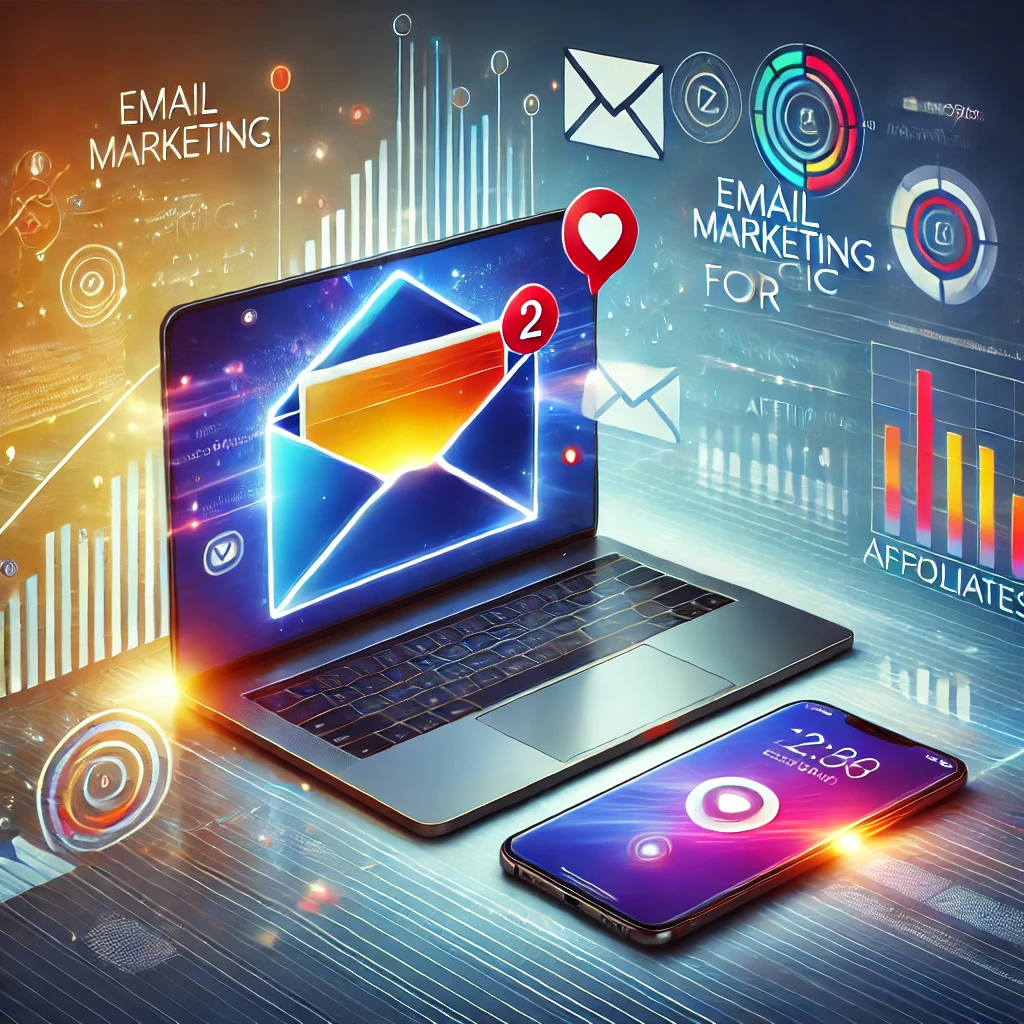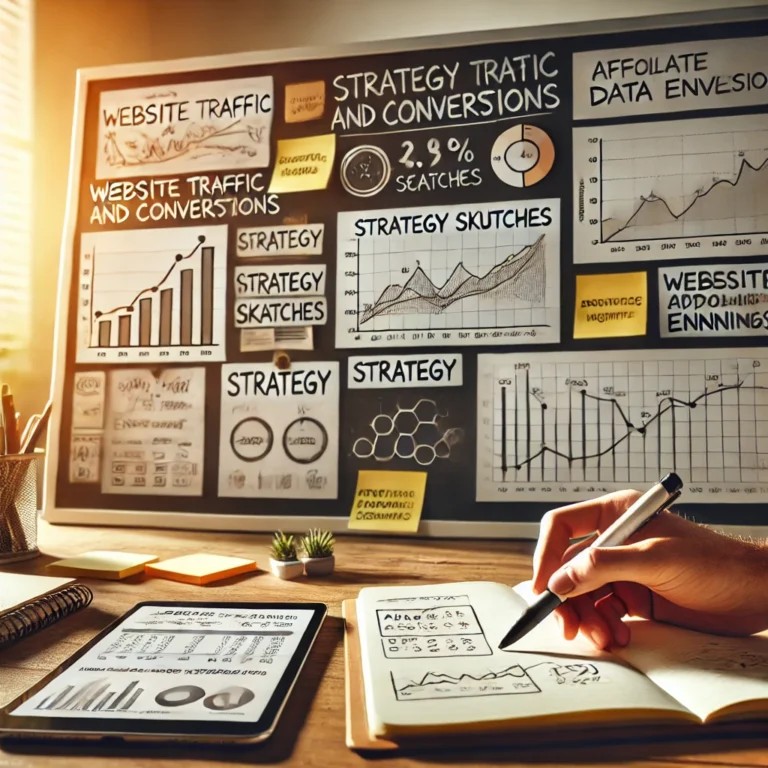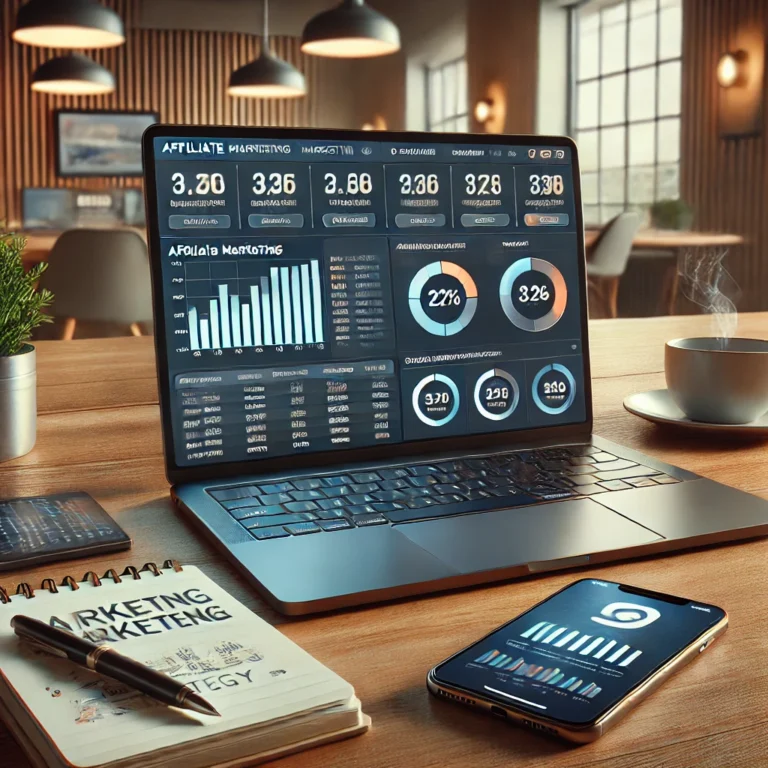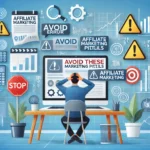Email marketing is not just about sending messages—it’s about creating a personal connection with your audience, building trust, and ultimately driving conversions. In this blog post, we’ll explore how to harness the power of email marketing for affiliate success. Whether you’re just starting out or looking to optimize your existing strategy, the insights shared here will help you turn every email into an opportunity.
Introduction
Imagine this: It’s a crisp Tuesday morning, and you’re enjoying your favorite coffee while scrolling through your inbox. Amid the usual clutter, one email stands out—not because of flashy graphics or extravagant promises, but because it speaks to you as if it were written just for your journey. This isn’t a fairy tale; it’s the magic of email marketing at work.
I vividly remember the first time I experienced this magic. As a young professional juggling multiple side hustles, I was skeptical of yet another “miracle” strategy. But a friend’s story about how a well-crafted email had skyrocketed their affiliate earnings almost overnight was like witnessing a seed transform into a mighty oak—steadily and reliably. That experience was my invitation into the world of email marketing, and it set me on a path toward long-term success.
In “Email Marketing Magic for Affiliates,” we’ll break down the art and science behind crafting emails that land in inboxes and resonate deeply with your audience. For young professionals eager to learn, experiment, and scale your online ventures, mastering email marketing is like discovering a golden key to affiliate success.
Key Point 1: Understanding the Basics of Email Marketing for Affiliates
Before diving into the intricacies, let’s start with the fundamentals. Think of email marketing as the engine that drives your affiliate marketing machine—a powerful tool that directs your message straight to those who matter most.
What Is Email Marketing for Affiliates?
At its core, email marketing is about building relationships. Imagine hosting a dinner party where every guest is a potential customer. Each email you send is like a carefully prepared course, designed to engage, inform, and delight your audience while gently guiding them from curiosity to conversion.
For affiliates, it’s not just about sending out mass messages; it’s about creating a strategic funnel. It starts with that crucial welcome email—a friendly handshake that sets the tone. From there, you nurture your audience with valuable insights, product recommendations, and personalized offers, all tailored to resonate with their specific interests.
The Email Marketing Funnel: Your Roadmap to Success
Visualize the email marketing funnel as a winding road that begins with awareness, moves into interest, and eventually leads to action. Each stage marks a pivotal moment in the customer journey:
- Awareness: Your audience first encounters your email—a spark that lights the initial flame of curiosity.
- Interest: Once you capture their attention, you engage them with content that answers their questions or solves a problem.
- Conversion: With trust established, your well-crafted call-to-action transforms interest into affiliate sales.
I once worked with a young affiliate whose emails were generic and easily overlooked. By reimagining his approach and injecting personality and value into his messages, his engagement and conversion rates climbed steadily. This experience demonstrated that personalized, strategic communication can truly ignite business growth.
Key Point 2: Building and Segmenting Your Email List
Think of your email list as a flourishing garden—each subscriber is a unique seed waiting to blossom into a vibrant relationship. Just as every garden needs the right care and organization, your email list requires intentional nurturing and segmentation.
The Art of List Building
A successful email marketing strategy starts with attracting the right audience. Picture it as hosting an exclusive party where every guest is genuinely interested in what you have to say. To build this guest list, consider these strategies:
- Lead Magnets:
Offer something valuable—such as an eBook, cheat sheet, or webinar—in exchange for your visitors’ email addresses. It’s like offering a delicious appetizer that leaves them wanting more. - Landing Pages:
Design dedicated pages that are visually appealing and persuasive, much like a welcoming front porch that invites guests into your home. - Social Media Integration:
Use your social platforms to drive traffic to your sign-up forms. Engaging posts, live sessions, or quick polls can encourage your audience to join your email community.
Segmenting Your Audience: The Secret Sauce
Once you’ve gathered your subscribers, the next step is to organize them. Segmentation divides your list into smaller, targeted groups—like creating personalized playlists for different moods.
- Demographic Segmentation:
Group subscribers by age, location, or job title. For instance, young professionals might appreciate dynamic, trend-driven content. - Behavioral Segmentation:
Analyze how subscribers interact with your content. Do they click on product reviews or engage more with educational content? Tailor your messages based on these behaviors to boost engagement. - Interest-Based Segmentation:
Identify what topics or products resonate with different segments of your audience. This ensures every email speaks directly to their needs.
I once had an email list that felt like a jumbled puzzle. After taking the time to segment my subscribers by interests and behaviors, my open rates and overall engagement improved dramatically. This taught me that personalization is key—when each email feels uniquely crafted for the reader, the impact is profound.
Key Point 3: Crafting Persuasive Email Content
Imagine sitting at your desk, composing an email that not only grabs attention but feels as if it were written for each individual reader. Crafting persuasive content is like composing a song where every note—the words, design, and call-to-action—creates a harmonious melody that resonates with your audience.
The Power of a Captivating Subject Line
The subject line is your first impression. It’s the headline that entices your readers to open your email, much like a book cover draws you in. Consider it a promise—a teaser of the value inside. I once experimented with two subject lines for the same campaign: one generic and one personalized. The personalized version not only generated higher open rates but also set a warm, engaging tone for the entire message.
Crafting the Email Body: Your Storytelling Canvas
Once your email is opened, the body becomes your stage. Here, you get to share your story, insights, and actionable value. Use a conversational tone—imagine you’re chatting with a friend over coffee.
- Engaging Narrative: Weave in personal anecdotes or relatable scenarios that mirror the challenges and victories your audience experiences.
- Clear Call-to-Action (CTA): Guide your readers on the next step, whether it’s checking out a product, reading a blog post, or replying with their thoughts.
- Visual & Emotional Appeal: Use vivid descriptions and metaphors to make complex ideas accessible—for example, describing a well-crafted email as a roadmap from curiosity to conversion.
Design and Layout: Creating a Visual Delight
A well-formatted email can be the difference between a quick scroll and deep engagement.
- Mobile-Friendly Design: Ensure your layout adapts seamlessly on different devices.
- Visual Hierarchy: Use headings, bullet points, and images to break up text and guide the reader’s eye.
- Consistent Branding: Stick to your brand’s color scheme and fonts to create a cohesive and recognizable look.
I recall a young affiliate who completely transformed his strategy by focusing on content personalization. By experimenting with subject lines and tweaking his email layout, his click-through rates increased significantly. His emails evolved from mere promotions to valuable content that his subscribers eagerly anticipated.
Key Point 4: Automation and Drip Campaigns
Imagine a well-oiled machine working around the clock—this is the power of automation in email marketing. In today’s fast-paced digital landscape, automation isn’t just a time-saver; it’s a strategy that nurtures relationships without constant manual effort.
Understanding Drip Campaigns
A drip campaign is like receiving a series of thoughtful letters from an old friend. Rather than overwhelming your subscribers with one long message, you break your content into a series of digestible, sequential pieces delivered at just the right moments.
- Building Trust Gradually: Begin with a welcome email, follow up with valuable tips, and gradually introduce affiliate products.
- Consistent Engagement: Much like water droplets carving a path through stone, well-timed emails steadily build trust and guide your readers toward making a purchase.
Embracing Automation Tools
Modern automation tools are like having a personal assistant who never sleeps. These tools help you set up sequences, monitor performance, and adjust timing based on subscriber behavior.
- Setting Up Sequences: Plan a series of emails that cover various facets of your product or service.
- Monitoring and Adjusting: Use analytics to track open rates, click-through rates, and conversions, and refine your strategy accordingly.
I once collaborated with a marketer who was manually juggling multiple campaigns. Transitioning to an automated drip campaign was like switching from a bicycle to a high-speed train—the results were faster, more consistent, and far more profitable. Automation allowed him to focus on creativity while ensuring that his subscribers received timely, valuable content.
Key Benefits of Automation
- Efficiency: Automation frees up time, allowing you to concentrate on crafting better content and developing strategic initiatives.
- Personalization at Scale: Even automated emails can be tailored based on user behavior, ensuring each message feels personal.
- Consistency: Scheduled emails maintain a constant connection with your audience, preventing them from drifting away.
Key Point 5: Measuring Success and Optimizing Campaigns
Imagine tending to a vibrant garden where every bloom and wither tells you a story about what’s working and what needs extra care. In email marketing, your data serves as this storyteller, offering insights that help you nurture and refine your campaigns for better results.
Decoding Your Email Metrics
- Key Performance Indicators (KPIs):
Think of KPIs as the vital signs of your email marketing efforts. They include:- Open Rates: Are your subject lines compelling enough to spark curiosity?
- Click-Through Rates: Once the email is opened, do readers feel motivated to explore further?
- Conversion Rates: Ultimately, how many subscribers take the desired action?
- A/B Testing: The Experiment That Drives Improvement
A/B testing is like running a mini-laboratory experiment. By comparing two versions of an email—say, two different subject lines or call-to-action placements—you learn what resonates best with your audience. Experiment with various elements and use the insights to fine-tune your approach.
The Art of Optimization
- Data-Driven Decisions:
Once you gather your numbers, let the data guide your strategy. Notice patterns—perhaps emails sent at a certain time yield better results, or a specific layout drives more clicks. Use these insights to adjust future campaigns. - Personal Reflection:
I once faced a campaign that seemed stagnant until I dived into the analytics. Tweaking the subject lines and simplifying the call-to-action based on the data led to an immediate 20% boost in click-through rates. It was like watching a puzzle come together, revealing the bigger picture of success.
Questions to Reflect On
- How frequently do you check your email analytics, and which metric surprises you the most?
- Have you experimented with A/B testing in your campaigns? What differences did you notice?
- What small changes could you implement today to see a measurable boost in conversions?
Visuals and Media
Visuals are the vibrant brushstrokes that bring your email marketing strategy to life. They transform complex data and ideas into engaging, digestible content that captivates your audience.
Ideas for Visual Enhancements
- Infographics:
Create an appealing infographic that maps out your email funnel—from the welcome email to conversion. This visual roadmap can simplify the process for your audience. - Screenshots and Dashboards:
Use anonymized examples of analytics dashboards and A/B testing results. Visual evidence of improvements in open and click-through rates can powerfully illustrate your points. - Short Explainer Videos:
Develop brief videos that walk your audience through setting up a drip campaign or interpreting key metrics. Videos offer a dynamic way to communicate complex concepts. - Interactive Elements:
Consider embedding interactive graphs or charts that allow users to explore data by hovering over key points. These elements can make your content both educational and engaging.
Presentation Tips
- Consistency is Key:
Maintain a cohesive look using your brand’s colors, fonts, and overall aesthetic in all visuals. - Simplicity Over Complexity:
Focus on clean visuals that highlight key messages without overwhelming the viewer. - Storytelling Through Imagery:
Use before-and-after graphs or time-lapse images to vividly illustrate the impact of your strategies.
Conclusion
As we wrap up our journey through the art of email marketing for affiliates, remember that every email you send is a step toward building a lasting connection with your audience. Today, we’ve explored the basics of email marketing, how to nurture and segment your subscriber list, craft engaging content, leverage automation, and optimize your campaigns with data-driven insights.
Each element is a vital ingredient in the recipe for success, transforming everyday emails into powerful tools that engage, inspire, and drive conversions. Now, it’s your turn to put these insights into practice. Reflect on your current strategies, experiment with new ideas, and watch your email campaigns evolve into dynamic conversations that lead to affiliate success.
Audience Engagement
Your voice matters, and we want to hear from you! Here are some ways to join the conversation and elevate your email marketing game:
- Interactive Q&A:
Share your experiences in the comments below. What tactics have worked for you? Where do you see room for improvement? Your insights could inspire others. - Polls and Surveys:
Keep an eye out for our polls or surveys embedded throughout our content. They’re designed to gather your opinions and help tailor future insights to your needs. - Community and Live Sessions:
Join our online community or participate in upcoming live webinars where you can ask real-time questions, exchange ideas with fellow marketers, and learn from industry experts. - Share Your Success Story:
Have a breakthrough moment with your email campaigns? Let us know! Your story might be featured as a case study to help guide others on their journey.
Additional Notes
To ensure your email marketing journey is both engaging and impactful, consider these creative strategies:
- Authentic Storytelling:
Use personal anecdotes and vivid descriptions to make your emails relatable. When subscribers see the real person behind the screen, trust and loyalty naturally follow. - Metaphors and Similes:
Compare complex concepts to everyday experiences. For example, view your email funnel as a winding road or your subject line as a captivating book cover. These literary tools simplify intricate ideas and leave a lasting impression. - Visual Consistency:
Keep a modern, clean aesthetic with all visuals—infographics, screenshots, and videos should align with your brand’s identity. - Conversational Tone:
Speak directly to your audience, as if you’re having a one-on-one conversation over coffee. This approach makes your content more accessible and builds genuine connections. - Interactive Elements:
Integrate quizzes, clickable diagrams, or short video snippets to make your content more engaging and interactive.
By infusing these elements into your strategy, you’ll create content that doesn’t just inform—it inspires action and fosters a thriving community of engaged affiliates.
Thank you for joining me on this deep dive into email marketing for affiliates. I hope these insights help you transform your approach and achieve greater success in your affiliate ventures. Feel free to share your thoughts, ask questions, or tell your success story in the comments below. Happy emailing!








